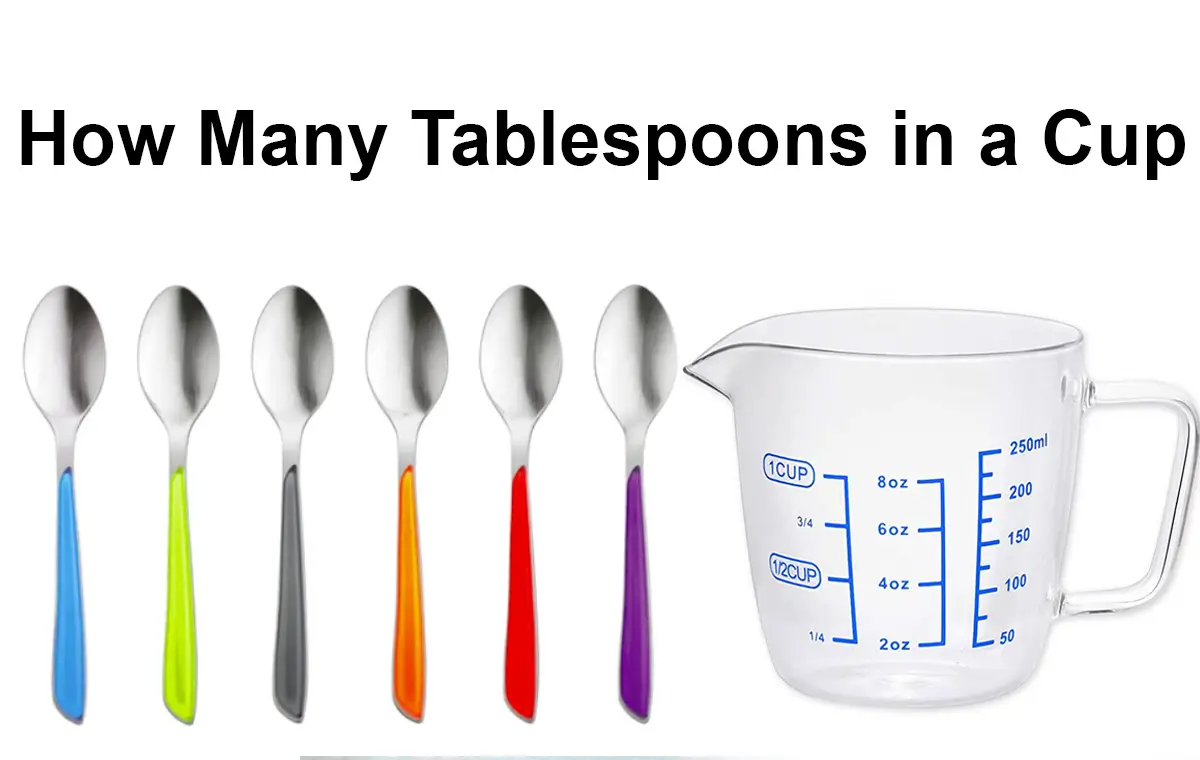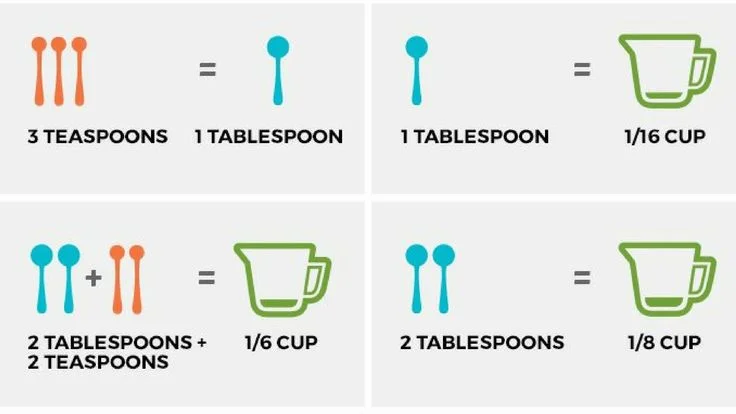
Whether you’re a beginner baker, a home chef, or someone simply trying to perfect a recipe, one question almost always pops up during cooking: “How many tablespoons are in 1/4 cup?”
It sounds simple—but understanding the exact conversion, when to level, and how to adjust for liquid or dry ingredients can make or break your dish. Precision matters in the kitchen, and a small error can completely change your flavor or texture.
In this in-depth guide, we’ll not only answer the main question but also explore the science, measurement hacks, professional tips, and international equivalents behind it. By the end, you’ll never second-guess a kitchen measurement again.
1. The Quick Answer: How Many Tablespoons Are in 1/4 Cup?
Let’s get right to the point.
👉 1/4 cup equals 4 tablespoons.
That’s the short and sweet answer.
In the U.S. customary system used in most recipes, the cup-tablespoon ratio works like this:
| Cups | Tablespoons | Teaspoons |
|---|---|---|
| 1 cup | 16 tbsp | 48 tsp |
| 3/4 cup | 12 tbsp | 36 tsp |
| 1/2 cup | 8 tbsp | 24 tsp |
| 1/4 cup | 4 tbsp | 12 tsp |
| 1/8 cup | 2 tbsp | 6 tsp |
So when a recipe calls for ¼ cup of something and you only have a tablespoon measure, scoop four level tablespoons—and you’ll be perfectly accurate.
2. Why Precise Measurements Matter in Cooking and Baking

Cooking may seem like an art, but baking is a science. A little too much flour can dry your cake; too little sugar can ruin the caramelization.
Precise conversions—like knowing that 1/4 cup = 4 tablespoons—are critical because they keep the ratios of wet to dry ingredients consistent.
Here’s why accuracy matters:
-
Texture: The balance of fats, liquids, and dry ingredients defines the texture of breads, cookies, and sauces.
-
Flavor: Salt, sugar, and spices work in ratios. Too much of one overwhelms the rest.
-
Chemical Reactions: Baking powder, baking soda, and yeast rely on exact measurements to react properly.
Even professional chefs double-check their measurements, especially when scaling recipes up or down. That’s why conversion knowledge is a must-have kitchen skill.
3. The U.S. Customary System vs. Metric System
Understanding where measurements come from helps prevent confusion.
In the United States, recipes use the customary system—cups, tablespoons, and teaspoons. But most of the world uses the metric system—milliliters, liters, grams, and kilograms.
Here’s a simple equivalence chart:
| U.S. Measurement | Metric Equivalent |
|---|---|
| 1 teaspoon | 5 mL |
| 1 tablespoon | 15 mL |
| 1/4 cup | ≈60 mL |
| 1/2 cup | 120 mL |
| 1 cup | 240 mL |
So, 1/4 cup = 4 tablespoons = 60 milliliters.
That means if you’re using metric spoons, four standard 15 mL tablespoons will also give you 1/4 cup.
4. Dry vs. Liquid Measuring: The Hidden Difference
Many people assume that dry and liquid measurements are interchangeable—but that’s a common kitchen mistake.
-
Liquid measuring cups are typically transparent (glass or plastic) with spouts.
-
Dry measuring cups are meant to be filled to the brim and leveled off.
The volume of 1/4 cup doesn’t change between the two, but the method of measuring does.
Example:
If you measure 1/4 cup of flour in a liquid cup, you might pack it down accidentally and get too much flour, making your dough dry.
That’s why professional chefs always use the correct cup type for the ingredient:
-
Use dry measuring cups for flour, sugar, oats, etc.
-
Use liquid measuring cups for milk, oil, or water.
Precision begins with the right tool.
5. Handy Conversion Guide for Common Ingredients
Let’s expand on what 1/4 cup equals for specific kitchen staples.
| Ingredient | 1/4 Cup Equals (Tablespoons) | Notes |
|---|---|---|
| Flour | 4 tbsp | Spoon and level (don’t pack). |
| Sugar (granulated) | 4 tbsp | Level with a knife for accuracy. |
| Brown sugar | 4 tbsp packed | Gently press into the spoon. |
| Butter | 4 tbsp = 1/2 stick | U.S. butter is marked for easy cutting. |
| Oil | 4 tbsp | Pour slowly to avoid overflow. |
| Milk | 4 tbsp | Equal to 60 mL. |
| Honey | 4 tbsp | Coat spoon with oil for easy release. |
| Salt | 4 tbsp (but rarely used that much!) | Always measure smaller amounts carefully. |
Having this chart nearby saves time when scaling recipes or improvising with different tools.
6. How to Measure 1/4 Cup Without Measuring Cups
We’ve all been there—you’re halfway through a recipe and realize your measuring cups have vanished. Don’t panic! You can still measure 1/4 cup using items you already have.
Option 1: Using Tablespoons
Since you know the conversion—1/4 cup = 4 tablespoons—just scoop four level tablespoons of the ingredient.
Option 2: Using Teaspoons
There are 3 teaspoons in 1 tablespoon, so:
1/4 cup = 4 tbsp × 3 tsp = 12 teaspoons
Option 3: Using Weight
If you have a kitchen scale:
-
Flour (1/4 cup) ≈ 30 g
-
Sugar (1/4 cup) ≈ 50 g
-
Butter (1/4 cup) ≈ 57 g
Option 4: Visual Estimation
When in a pinch:
-
A standard shot glass (2 oz) holds about 4 tablespoons—that’s 1/4 cup!
-
A ping-pong ball-sized scoop of butter is roughly 1/4 cup.
Once you learn these quick hacks, you can measure accurately anywhere.
7. Scaling Recipes: Doubling or Halving 1/4 Cup
Conversions become even more useful when you’re scaling a recipe up or down.
| Original Measurement | Half | Double | Triple |
|---|---|---|---|
| 1/4 cup | 2 tbsp | 1/2 cup | 3/4 cup |
| 1/2 cup | 1/4 cup | 1 cup | 1 1/2 cups |
| 1 cup | 1/2 cup | 2 cups | 3 cups |
Pro Tip:
When scaling, always measure by weight for accuracy, especially in baking. Doubling small ingredients like baking powder can easily cause overflow or imbalance, so stick to precise conversions.
8. International Differences in Tablespoon Size
Here’s where many people get tripped up: not all tablespoons are the same size worldwide.
| Region | Tablespoon Volume |
|---|---|
| United States | 14.79 mL |
| United Kingdom | 15 mL (sometimes 17.7 mL in old cookbooks) |
| Australia | 20 mL |
| Canada | 15 mL (modern), but older recipes may vary |
So if you’re following an Australian recipe, their tablespoon equals 1 1/3 U.S. tablespoons!
That means when converting 1/4 cup (60 mL) to Australian tablespoons, you’ll get:
60 mL ÷ 20 mL = 3 tablespoons
While in the U.S. and U.K. it remains 4 tablespoons.
Always check where the recipe originated from before converting—this ensures you maintain authentic taste and texture.
9. Professional Chef Tips for Perfect Measurement
Even seasoned pros can make measuring mistakes. Here’s how chefs get it right every time:
-
Use the right tool: Dry cups for solids, liquid cups for liquids.
-
Level off ingredients: Use the back of a knife to flatten dry ingredients.
-
Avoid scooping from the bag: Spoon dry ingredients into the cup to avoid compacting.
-
Measure liquids at eye level: Keep the cup on a flat surface for precision.
-
Weigh for accuracy: Invest in a kitchen scale—especially for baking.
-
Pre-measure before starting: Organize all ingredients (mise en place) to prevent errors.
-
Convert consistently: Stick to either metric or U.S. customary units—don’t mix mid-recipe.
Following these tips ensures every dish comes out consistently delicious.
10. Beyond 1/4 Cup: Mastering Common Kitchen Conversions
Learning how many tablespoons are in 1/4 cup opens the door to mastering all conversions. Here’s a complete table of popular kitchen equivalents:
| Measurement | Tablespoons | Cups | Milliliters |
|---|---|---|---|
| 1 teaspoon | 1/3 tbsp | — | 5 mL |
| 1 tablespoon | — | 1/16 cup | 15 mL |
| 2 tablespoons | — | 1/8 cup | 30 mL |
| 4 tablespoons | — | 1/4 cup | 60 mL |
| 8 tablespoons | — | 1/2 cup | 120 mL |
| 16 tablespoons | — | 1 cup | 240 mL |
| 32 tablespoons | — | 2 cups | 480 mL |
Having these numbers memorized saves time and keeps you confident in any recipe—American, British, or metric.
Conclusion: The Power of Knowing Your Conversions
Now you know the answer: there are 4 tablespoons in 1/4 cup—a simple yet powerful fact that can elevate every dish you make.
Cooking is about creativity, but precision is what turns good food into great food. Whether you’re converting between cups and spoons, switching between metric and U.S. units, or adapting international recipes, understanding these ratios keeps your results consistent.
The next time you find yourself asking, “How many tablespoons in 1/4 cup?” you’ll not only know the number—you’ll know why it matters.
So grab your measuring spoons, keep this guide handy, and cook with confidence. Because great meals start with accurate measurements and a dash of knowledge.
FAQs About Tablespoons and Cups
1. How many tablespoons are in 1/4 cup of butter?
How Many Tablespoons in 1/4 Cup? There are 4 tablespoons in 1/4 cup of butter—equal to half a standard stick in the U.S.
2. Is 1/4 cup the same for dry and liquid ingredients?
Yes, the volume is the same, but you should use the proper measuring cup type for accuracy.
3. How can I measure 1/4 cup without a cup?
Use 4 tablespoons or 12 teaspoons. You can also estimate using a 2-ounce shot glass.
4. How many milliliters are in 1/4 cup?
1/4 cup = approximately 60 milliliters.
5. Why do my measurements differ between recipes?
Different countries use different tablespoon sizes (U.S., U.K., Australia). Always check the region of origin before converting.
